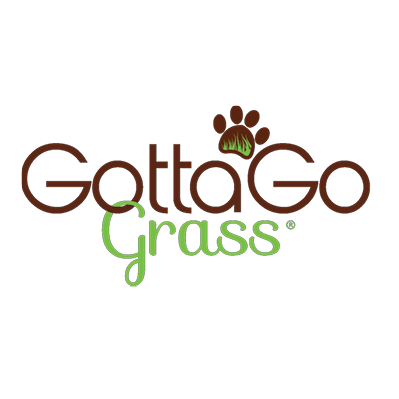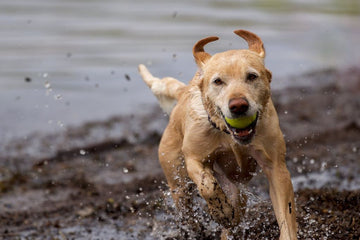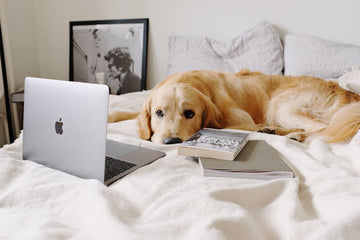
In potty training, the sooner you start, the sooner your dog will learn, and this couldn't be more true. However, if you find yourself needing to potty train an older dog, don't stress—know that it's still possible with proper preparation and the right strategies.
There are several reasons why an older dog may need to be house-trained or re-trained:
- No previous potty training lessons: Some older dogs may simply have never received proper potty training.
- Adoption from shelters: Adult dogs adopted from animal shelters may not have had enough opportunities to potty outside and may have soiled their crate or bedding out of necessity.
- Transitioning from outdoors to indoors: Dogs used to living outside may need to move indoors due to declining health or a change in living arrangements, such as moving to an apartment.
- Age-related issues: As dogs age, they may struggle to hold their bladder as long as they used to. Health issues like diabetes or kidney problems can increase their need to urinate, leading to more accidents.
- Mobility issues: Additionally, conditions like arthritis can make reaching their usual potty spot challenging.
In these situations, bathroom solutions like dog grass pee pads can prove incredibly useful. These grass patches provide a familiar, convenient, accessible, and natural surface for older dogs to relieve themselves, making the transition easier. Using grass pads for dogs can help manage the house training process more effectively and ensure a successful adjustment for you and your adult dog.
How to Potty Train an Older Dog
Potty training old dogs requires greater patience and consistency. Whether your older pup has had previous training or not, starting fresh can help reinforce good habits. The objective of the process is to establish a consistent routine and train your dog where they are supposed to relieve themselves, thus preventing accidents.
Establish a Routine
- Feed your dog regularly 1-2 times a day, and pick up the food bowl 10-15 minutes after putting it down, regardless of whether it's empty. This helps regulate your dog's elimination schedule. Free-choice feeding, where food is always available, can make potty training more challenging because it disrupts predictable bathroom times.
- +Take your dog out for potty breaks or to their indoor grass pee pad at the same times every day. Key times include first thing in the morning, after meals, when you arrive home from work, and before bedtime. Stay outside long enough for your dog to relieve themselves. The more opportunities they have to go to the right place, the faster they will learn.
- Praise or give your dog treats immediately after they successfully potty in the proper place. The emphasis here is on the word immediately to ensure they associate the reward with the correct behavior.
Using positive reinforcement can make a significant difference. Rewarding your dog for successful potty trips creates a positive connection, while punishing them for accidents can lead to fear and confusion. Always clean up accidents immediately and without fuss to avoid lingering odors that may attract your dog back to the same spot.
Supervise Your Dog
Keeping a close eye on your old dog helps prevent accidents and reinforces good potty habits. It also lets you catch signs that your dog needs to go out. Look for cues such as sniffing, barking, scratching at the door, circling, or restlessness. When you see any of these signs, take them immediately outside or to their designated bathroom spot.
You should also consider tethering your dog with a leash that allows about six feet of movement to keep them close. Alternatively, use baby gates to confine your senior dog to the same room as you. Constant supervision and prompt responses to their cues help them understand where it's appropriate to relieve themselves while also significantly reducing the risks of indoor accidents.

Confinement
When you can't supervise your older dog, confine them in an area just large enough for them to stand, l/ie down, and turn around comfortably. Crate training can be particularly useful here, as it leverages the dog's instinct not to soil their sleeping area, thus teaching them to hold their bladder during confinement. It also teaches your dog to wait until they are let outside or taken to their grass patch.
However, keep in mind that because you're caring for a senior dog, make sure to let them out more often for bathroom breaks. Once your dog is successfully potty trained, you may no longer need to use the crate for confinement. Instead, the crate can become a safe space your dog chooses to retreat to whenever they want.
Check for Medical Issues
Occasional accidents are completely normal, even in potty-trained dogs. However, if the issue persists or worsens despite consistently following housetraining procedures, it's important to consult your veterinarian to rule out any underlying medical issues.
Frequent urination can be a sign of health issues such as urinary tract infections. It may also indicate behavioral problems like submissive or excited urination, territorial marking, separation anxiety, or reactions to fear or trauma. Identifying the root cause will ensure your dog receives the appropriate treatment and support.

Potty Training Older Dogs with Gotta Go Grass®
While training an older dog may require more time and patience than training younger pets, it is feasible. Maintain a consistent schedule, use positive reinforcement, and set clear expectations. With patience, commitment, and effort, your adult dog will eventually learn where to do their business. When given proper guidance, you'd be surprised how well they can adapt to house training.
Gotta Go Grass® offers natural grass pads for dogs, suitable for indoor and outdoor use. These living grass pads are not only recommended for all dogs of size and age but also particularly beneficial for senior dogs.
Older dogs, especially those with mobility issues or health conditions, can benefit from the convenience of grass pads. They provide an accessible surface for bathroom breaks, making it easier for you to maintain a sanitary environment and for your dog to maintain proper hygiene without frequent outdoor trips.
Ready to get started? Shop for grass potty pads for dogs at the Gotta Go Grass® website today!



